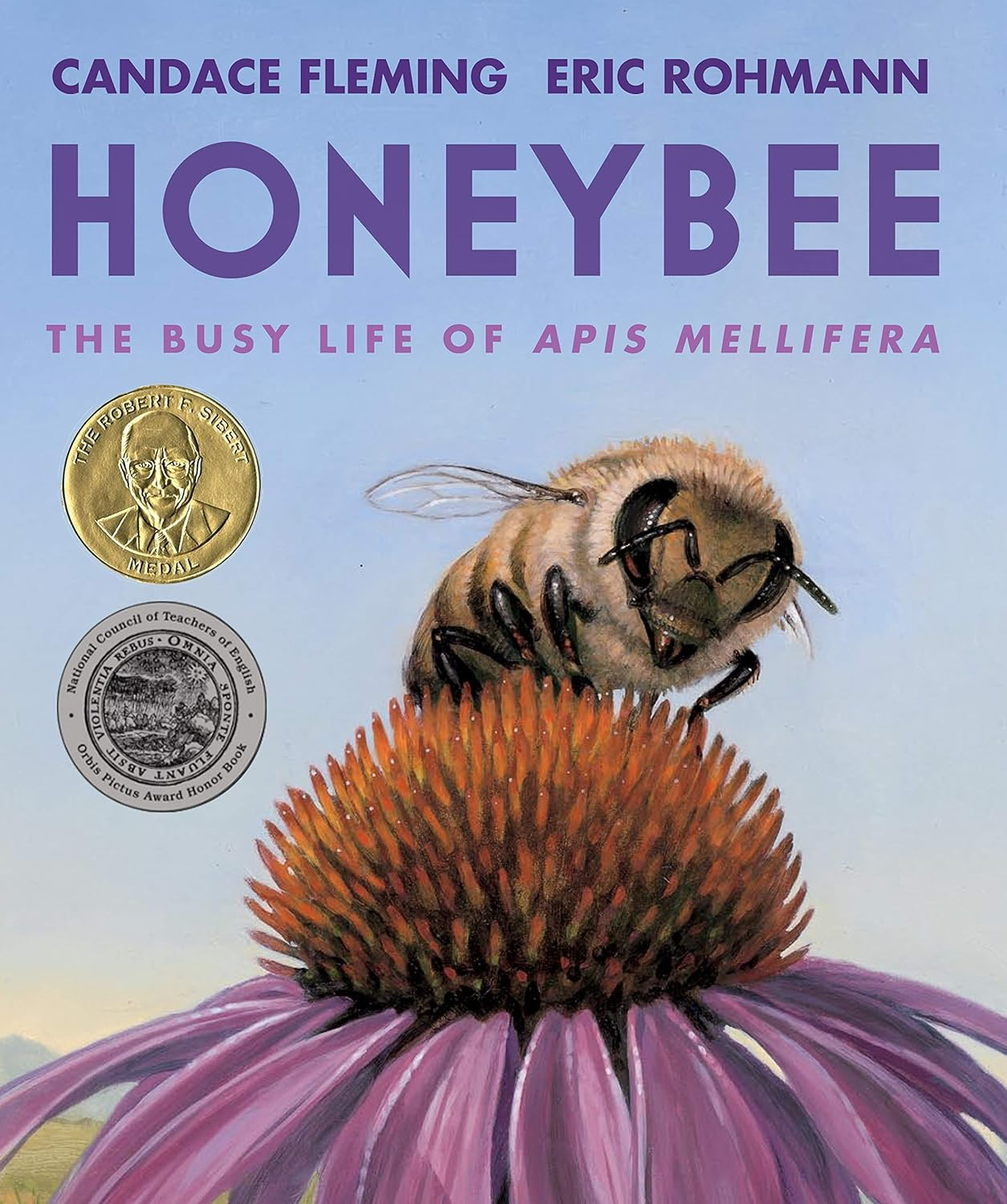Honeybee: The Busy Life of Apis Mellifera by Candace Fleming and Eric Rohmann
Informational Book
Honeybee: The Busy Life of Apis Mellifera written by Candace Fleming and illustrated by Eric Rohmann. Published by Holiday House (2020)
This non-fiction book narrates the lifespan and stages of a western honeybee From one female worker bee's birth through the many tasks in her short lifespan, climaxing with a double foldout spread where she takes flight, and working hard until one day she remains still. Then, a new honeybee pushes through the cell they hatched in and starts a new life.
I really appreciate a good picture book, and I really appreciate accessible non-fiction so this is the best of both worlds. When I want to learn some broad strokes about a subject but don't want to invest too much time, I like to check out the children's nonfiction. Here Fleming has packed a great deal of information into a picture book, that was really a pleasure to read (and kind of emotional, from Apis's flight into the great blue sky above a field of wildflowers, to her remaining still after her brief summer life. I learned so much in this book, and I'm interested in finding out more because of the book, both of these points being hallmarks of any good informational book. Did you know that most bees are female (like 99%), and all the worker bees are female?! There is a spread at the end explaining the anatomy of the worker bee, a kind of fun-fact section after that, and resources to learn more about bees. One last "fun" fact that always surprises me when I hear it: in a worker bee's life they collect enough nectar to make just one-twelfth of a teaspoon of honey.
This book was award with the Robert F. Sibert Informational Book Medal in 2021.
This informational book would not be unwelcome in a storytime, especially a science/nature themed one. At my last library we had a pollinator garden with a little amphitheater next to it which would be great for an outdoor storytime. The pictures are quite big and bold that would lend itself well to a storytime where folks are more spread out (like when they are outdoors). I also love finding great nonfiction for kids, and I am more likely to read it if it's a satisfyingly quick picture book rather than a middle-grade chapter book (not to knock those, I just don't always have the time to dive into one).

Comments
Post a Comment